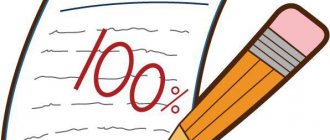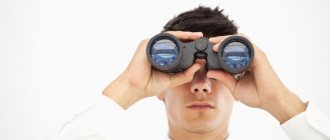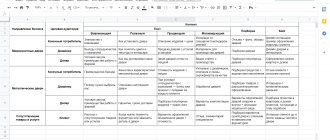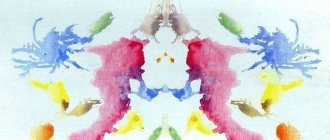Essence and features
There are several options for describing this definition:
- A formalized way of processing graphic or text information. Characteristics: systematic, strict.
- A qualitative and quantitative method of studying texts that allows us to identify trends and facts that are reflected in the analyzed documents.
When applying this technique, routine document analysis cannot be canceled. Both of these methods should complement each other and be combined with each other. Only when they are combined can you understand the meaning of the written text.
Essence of the method:
- This technique can be used as a leading one, but it is better to use it in combination with other methods of obtaining information.
- The study of documents and literary texts should be carried out in their social context.
- Units of text need to be recorded.
Content analysis is used to research and study:
- Social and psychological phenomena that are reflected in the content of messages.
- Features of people who create texts, documents, fiction.
- Social and psychological aspects of the author’s influence on the public.
The technique allows you to clarify, process and transform information that was obtained during conversations, interviews, and open-ended questions from questionnaires.
The researcher needs to identify units of text content and distribute the information received into separate groups according to predetermined criteria.
Before you start using content analysis, you need to understand when it is effective:
- If the language factor plays a decisive role in obtaining the necessary information. For example, this is relevant for searching for authors of foreign texts, establishing the authorship of texts by famous writers and composers.
- When there is no direct access to the author of the text. If the author is inaccessible, only the information presented in his works can be analyzed.
- If you need to process a large amount of information. Similar problems are faced by people who work in the media, cinema, and study literature. For example, it is impossible to characterize the situation in the world by reading information on two sites without touching on the array of data among a large number of sources.
Empirical research methods
This type is based on empirical, that is, sensory perception, as well as on measurement using instruments. This is an important component of scientific research in all fields of knowledge from biology to physics, from psychology to pedagogy. It helps to determine the objective laws in accordance with which the phenomena under study occur.
The following empirical research methods in coursework and other student works can be called basic or universal, because they are relevant for absolutely all areas of knowledge.
Studying various sources of information. This is nothing more than a basic collection of information, that is, the stage of preparation for writing a master's thesis or course work. The information you will rely on can be taken from books, the press, regulations and, finally, from the Internet
When searching for information, you should remember that not all finds are reliable (especially on the Internet), therefore, when selecting information, you should treat them critically and pay attention to the confirmation and similarity of materials from different sources. Analysis of the information received. This is the stage that follows the collection of information
It is not enough just to find the necessary material, you also need to carefully analyze it, check for logic, reliability and relevance. Observation. This method is a focused and attentive perception of the phenomenon under study followed by the collection of information. In order for observation to bring the desired results, you need to prepare for it in advance: make a plan, outline factors that require special attention, clearly define the timing and objects of observation, prepare a table that you will fill out during the work. Experiment. If observation is a rather passive research method, then experiment is characterized by your active activity. To conduct an experiment or series of experiments, you create certain conditions in which you place the subject of research. Next, you observe the reaction of the object and record the results of the experiments in the form of a table, graph or diagram. Survey. This method helps you look deeper into the problem being studied by asking specific questions of the people involved. The survey is used in three variations: an interview, a conversation and a questionnaire. The first two types are oral, and the last is written. After completing the survey, you need to clearly formulate its results in the form of text, chart, table or graph.
History of the study
In psychology, the method of subjective content analysis began to be used in the 30s of the 20th century in the social sciences. The first areas that began to test this technique were journalism and literary criticism. The procedures that this method includes were founded by American sociologists - B. Berelson, H. Lasswell.
Scientists tested the methodology in the field of politics and propaganda, and were able to modernize it and adapt it to various spheres of human activity.
The frequency of application of content analytical methods has increased during the development of mass media. When B. Berelson summarized the data obtained in a book, the technique began to be used in scientific fields outside of psychology.
Simultaneously with the development of content analysis in America, it began to gain popularity in the USSR. Scientist N.A. Rybnikov contributed to the development of the Soviet approach to the development of this technique.
He specialized in the study of biographical data. He used the content analysis method to study personalities based on their autobiographies.
Initially, Rybnikov began studying the works of workers' children. He invited them to describe life, positive and negative moments, and reveal their experiences.
Thus, the scientist was able to determine which positive and negative aspects of life prevail in children, depending on age. He made an interesting conclusion - at an early age, girls have a more positive outlook on life than boys. As they grow older, they are more inclined to negative thoughts and experiences.
The next scientist who continued to use content analysis and develop this direction was P. P. Blonsky. He was only interested in people's primary memories. He recruited subjects from the education sector. These were teachers, professors, students, schoolchildren.
After conducting research, the scientist was able to prove that for most people, primary memories are associated with fears or difficult experiences.
Functional analysis in sociology
Functional analysis is a methodology that is used to explain the operation of a complex system. The basic idea is that the system is viewed as computing a function (or, more generally, solving an information processing problem). Functional analysis suggests that such processing can be explained by decomposing this complex function into a set of simpler functions that are computed by an organized system of subprocesses.
Functional analysis is important to cognitive science because it offers a natural methodology for explaining how information processing occurs. For example, any “black box diagram” proposed as a model or theory by a cognitive psychologist is the result of the analytical stage of functional analysis. Any proposal about what constitutes a cognitive architecture can be seen as a hypothesis about the nature of cognitive functions at the level at which those functions are involved.
Varieties and methodologies
Types of content analysis in psychology:
- Non-quantitative. It is based on a non-frequency model of text content.
- Quantitative. Involves the use of mathematical and statistical procedures. When researching, scientists take into account the style of speech, semantic blocks, and words.
Psychological science identifies 4 content analysis methodologies:
- Sociological or semantic. This is carried out with the help of expert assessments of the content.
- Linguistic or grammatical. It is determined by the length of phrases, the size of paragraphs, the order of words that make up the sentence, and metric composition.
- Situational. Processing, transformation of bibliographic references and scientific literature.
- Cybernetic or documentary. Determined by text density, language parameters, flow, aspect ratio, information volume, capacity, information content.
An example of content analysis of advertising. Contextual advertising analysis
Competition in Yandex.Direct and Google Ads contextual advertising is sometimes intense, so it is important to know about the keywords used and the quality of competitors’ advertisements. This analysis will help identify:
what calls to action do competitors use and what they focus on in their ads;
Do they use additional extensions to work with contextual advertising?
what ideas you can borrow and remake for yourself;
What are the approximate costs of competitors for advertising?
Here are several programs and services that will help you conduct your research:
DirectEditor is a program for editing and analyzing Yandex.Direct advertising campaigns. The “Competitors” function deserves special attention, with which you can analyze competitors in Yandex.Direct for all keywords of the selected level. The data is also supplemented by a forecast of the cost of the contextual advertising budget from Yandex.Direct, taking into account real positions.
SpyWord – analyzes the quantity and quality of competitor keywords. To do this, you need to enter a competitor's domain or keyword.
The Yandex.Direct budget forecast allows you not only to estimate future advertising costs, but also to view competitors’ advertisements based on the keywords you entered:
Serpstat is a multifunctional SEO platform. In the “Keyword Analysis” section, you can see which pages are receiving traffic from the context and how many ads are configured for a specific page.
Advantages and disadvantages
With this method:
- You can see hidden patterns and trends.
- The behavior of the subject cannot be disrupted by the researcher.
- It turns out to identify reliable indicators, which are often extremely difficult to distinguish in a massive amount of information.
- It is possible to obtain reliable results.
With the help of content analysis, it is possible to reveal the psychological characteristics of the author, the communicator, and the current audience, and determine the connection between them. The technique allows you to see the connection between the written text and the reality that surrounded the author at the time of its writing and draw conclusions.
This is a labor-intensive method. To understand what kind of reality surrounded the author and his readers during the period of writing and submitting the text, you need to study each person individually, his:
- environment;
- social status;
- geographical position;
- the situation in the country;
- mental and physical state.
To do this, you need to collect a lot of information.
Procedures
Psychologists identify several content analysis procedures. To use this technique, you need to carefully study the features of the study.
Identification of semantic units
To identify a semantic unit, you need to know what they are:
- Facts, events.
- Documentary information about a person.
- The subtext of appeals that are sent to a potential addressee.
- Topics that are expressed in texts, videos, music.
The semantic units of content analysis are assigned before conducting the research. They may vary depending on the goals, content, hypotheses, and tasks.
Identifying units of account
Units of analysis and units of counting may be the same or different. They depend on the purpose of the study being conducted. If they do not match, then the psychologist identifies his own units of calculation, the most popular of which are:
- Meters of video or audio recording.
- Duration of the TV show.
- Number of lines in the text.
- Number of pages, individual words.
- The number of images related to the subject of the text.
Count
To calculate the results, you need to put forward criteria by which the information will be divided into separate groups. Computer programs, tables, and special formulas can be used for calculations.
The need for quantitative analysis
Remark 1
Quantitative text analysis is used when a high degree of accuracy is required when comparing single-order data. The first step in this direction is to identify indicators of key research concepts.
It is advisable to use quantification in content analysis when comparing quantum texts with other quantitative characteristics. Quantitative characteristics must necessarily be associated with qualitative ones, which in the study of documents record the properties and characteristics of the objects identified by the researcher and allow him to analyze the connection of these characteristics with the studied field of activity of the compiler of documentary information.











